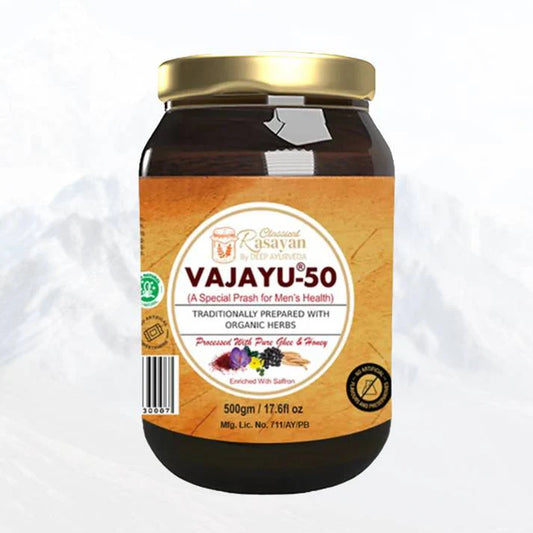Fibromyalgia is a chronic disorder that causes severe pain and fatigue, as well as other various symptoms that might have a significant impact on one’s life. The condition is managed through medication and lifestyle interventions in conventional modern medicine. However, many people with fibromyalgia seek holistic therapy in the form of Ayurveda, an ancient Indian healing system. In Ayurveda, all diseases arise from imbalances in the body, mind, and environment.
Fibromyalgia is considered to be a Vata disorder, although disturbances in the Pitta and Kapha doshas are also involved. As a result, Ayurveda believes that fibromyalgia can be treated using diet, herbal medicine, and body therapy.
Ayurveda’s Perspective on Fibromyalgia
From an Ayurvedic perspective, fibromyalgia may be referred to as a disorder affecting the Vata dosha, one of the primary forces that direct bodily functions. Vata represents the element that allows the body to move and interact; it controls such elements of functioning as nerve impulse speed, quality of circulation, respiration depth, and ease of digestion.
When Vata acts within healthy parameters, it manifests as energy and adaptability; however, in a state of imbalance, conditions such as fibromyalgia may arise, disturbing the natural functions of the body, leading to pain and immobility, and giving rise to numerous other debilitating symptoms. The balance might be disturbed due to various factors such as stress, sleep patterns, and diet, which, according to the principles of Ayurveda, all serve to agitate Vata even more.
Although Vata plays an important role, the other two doshas, Pitta and Kapha, may also influence the disease's severity and symptoms. When out of balance, the former influences metabolism and anabolic processes, while the latter is responsible for strength, stamina, and lubrication. Therefore, the Ayurvedic treatment of fibromyalgia will consist of various therapeutic therapies that have the doshic balance adjusted to soothe the root cause of the symptoms and aim to improve overall well-being.
Key Symptoms and Their Meaning in Ayurveda
- Pain and stiffness: In Ayurveda, pain and stiffness are explained under the disturbances of the Vata dosha. Vata is known as a controller of movement and regulation in the body, which includes muscle and nerve functioning. When Vata is unbalanced, there will be dryness and depletion of muscle tissues, leading to pain and stiffness. This unbalance may be due to stressful conditions, lack of proper sleep, or diet.
- Fatigue: Fatigue can be due to the overactive status of Vata and the deficiency of Kapha. The overactive Vata will withdraw the energy and vitality of the body which leads to body tiredness. Kapha is essential to provide energy and stability, but deficiency in it cause lack of grounded force in the body which exacerbates fatigue.
- Sleep issues: Ayurveda explains the sleep troubles as part of an imbalanced Vata. Vata is responsible for the nervous system and brain activities, which gets distressed with an imbalanced state; hence proper overt and nervous impulse generation will not be there and causes sleep issues.
- Digestive problems: Disturbances in the digestion system are generally explained under the faulty Pitta dosha. Pitta is related to heat and fire, and it is responsible for digestion and metabolism in the body. With an imbalance of Pitta, there will have various digestive issues like indigestion, hyperacidity, and abnormal bowel movements. Dietary habits like overuse of spicy, sour, and hot foods may lead to Pitta imbalance.
Dietary Recommendations

An Ayurvedic diet for fibromyalgia focuses on pacifying the aggravated doshas, particularly Vata, which can be balanced by nourishing, moist, and grounding foods.
Favorable Foods
- Warm Items: Consume warm, such as soups and stews, as they are warm and easier for digestion.
- Grains: Take grains, such as wheat and rice.
- Sweets Foods: Choose food items such as bananas, berries, which are naturally sweet.
- Roots Vegetables: Eat root vegetables, including carrots and potatoes.
- Dairy: Consume dairy products, including milk, yogurt, and butter, since they are pacifying.
Foods to Avoid -
- Cold and Raw Foods: Avoid these as they can make symptoms worse.
- Caffeinated Drinks: Stay away from drinks with caffeine, as they can disrupt your sleep and energy.
- Nightshades: Try to avoid vegetables like tomatoes and potatoes if they bother you.
This approach focuses on enhancing your body’s harmonious balance by consuming nourishing foods and avoiding those that may cause discomfort.
Herbal Remedies

In addition to these measures, Ayurveda uses a variety of herbs to relieve symptoms of fibromyalgia through body detoxification, strengthening of immunity, and recovery. The following are the major herbs used:
- Ashwagandha (Withania Somnifera): Ashwagandha is well-known to help the body fight stress. It kills fatigue and stress by ensuring that the response of the body towards stress increases.
- Turmeric (Curcuma Longa): Turmeric has an effective component called curcumin, which is a potent anti-inflammatory that can help to reduce inflammation throughout the body.
- Brahmi (Bacopa Monnieri): Brahmi is also an important herb used as a brain tonic and is often used to reduce stress and improve cognitive functions.
Through the above-mentioned herbs, Ayurveda uses these and others to balance disorders in the body and alleviate symptoms at the causative level.
Panchakarma: Ayurvedic Detoxification

In Ayurveda, Panchakarma is a term used to describe a set of procedures that clean the body of toxins. A Panchakarma program created specifically for a fibromyalgia patient might involve:
- Snehana (Oleation): This is performed by applying oils to both the inside and outside of the patient’s body. The combined effect softens the toxins that are immured between body tissues, making them easier to remove.
- Swedana (Sudation): After oiling, swedana is performed. It is a procedure to induce sweating, done in steam baths or hot rooms. Sweating aids in eliminating the toxins that have been softened by oil.
- Virechana (Purgation): Lastly, virechana is used for the removal of toxins from the gastrointestinal system. The active ingredient causes frequent bowel movements that expel all the virulent toxins.
Combined, these panchkarma therapies help leech the toxins that provoke fibromyalgia, including those leading to fatigue. The goal is to achieve balance and induce health.
Yoga and Meditation for Mind-Body Integration

Yoga: Yoga offers gentle exercise and body awareness, which can be particularly therapeutic for those with fibromyalgia, while meditation provides a means to manage stress and emotional turmoil associated with chronic pain.
- Tadasana (Mountain Pose): Meant to improve posture and balance.
- Balasana (Child’s Pose): Meant to soothe the nervous system and stretch the spine and back.
- Vrikshasana (Tree Pose): Good for better body balance and flexibility. These poses not only offer physical exercises but also help to calm the mind and reduce the physical discomfort associated with fibromyalgia.
These poses are not only physical exercises but also ways to calm the mind and reduce the physical discomfort associated with fibromyalgia.
Meditation: Meditation provides tools for Chronic pain management by preparing you to handle the stress and emotional turmoil induced by the condition. Mindfulness and guided visualization are two most recommended meditation exercises for chronic pain management. It helps center the mind, offering a sense of peace and reducing the psychological impact of chronic pain. Regular meditation can help you develop better stress management skills and emotional resilience, which are very important in facing the challenges of fibromyalgia
Implementing Ayurvedic Practices
If you’re a patient looking into Ayurvedic treatment for a condition like fibromyalgia, here’s what you can do. First, find a licensed Ayurvedic practitioner, such as Dr. Baldeep Kour from Deep Ayurveda, with more than 18 years of experience in all aspects of Ayurveda. Here’s how you can proceed under her guidance:
- Consultation: When you schedule a meeting with Dr. Baldeep Kour, you’ll go through the key aspects of your health history, current symptoms and complaints, your overall lifestyle, and other relevant health factors. This baseline assessment helps you both better understand your overall health and wellness needs.
- Personalized Assessment: While at the consultation, Dr. Kour will be assessing your doshic imbalances. In Ayurveda, doshas are energy types – Vata, Pitta, and Kapha – that govern inborn physiological activity. Identifying if and which energy type is out of balance is vital for various treatments.
- Customized Treatment Plan: After her assessment, Dr. Kour will develop a treatment plan, all of which will be customized for you. This plan can be in the form of dietary suggestions, herbal supplements, or other Ayurvedic treatments that might help target your specific condition and mitigate doshic imbalance.
By consulting with an experienced practitioner like Dr. Baldeep Kour, you ensure that your Ayurvedic treatment plan is carefully tailored to meet your specific health conditions and goals, providing a focused approach to restoring health and balance.







